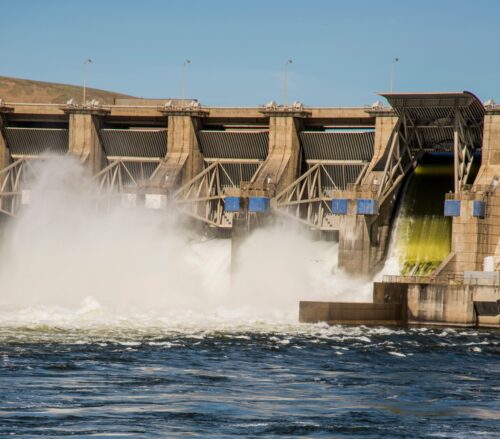Take Action: Submit a Public Comment Pressing Federal Action on Salmon Protection
26th of Jun 2023

By Maggie Larson
The Columbia River Basin is the crown jewel of the Pacific Northwest. It consists of about 250,000 square miles of rivers and tributaries, including the Snake River which feeds into the Columbia. The Columbia Basin was once home to one of the most abundant salmon runs in the U.S. but has been on the decline for the last 150 years due in large part to the construction and operation of hydroelectric dams along with other factors.
Prior to the mid-1800s, as many as 16 million wild salmon and steelhead returned to the Columbia River each year to spawn—a figure that declined to less than a million in the 20th century. These salmon are crucial to the survival of other species as well, such as bears, eagles, osprey, and ocean-dwelling orcas which rely on salmon for food. The decline in salmon populations also has negatively impacted Indigenous communities, who have relied on salmon for sustenance for time immemorial, and whose cultural identity is closely tied to the species.

Particularly problematic for salmon are the four dams on the lower Snake River. The four dams are located in southeastern Washington upstream from the Snake River’s confluence with the Columbia. These dams choke off the Snake River Basin which contains pristine habitat for salmon spawning. This basin consists of over 5,000 miles of stream habitat in central Idaho alone. However, these dams block salmon and steelhead from moving freely up and downstream. The dams also create warmer water temperatures that deprive the water of the nutrients salmon need to survive.
Billions of dollars have been spent on salmon mitigation in the Pacific Northwest which includes habitat restoration and maintaining hatcheries. And yet salmon populations continue to decline. Even as these mitigation efforts fail to recover salmon and steelhead, power provided by the Bonneville Power Association (BPA)—a government agency that sells power from the Northwest’s federally-owned hydroelectric dams, including those on the lower Snake River—is becoming more and more costly.
Advocates for the West has a long history of winning cases to protect the runs of native
anadromous fish in the Pacific Northwest and is currently challenging BPA for breaching its legal duty for “equitable treatment” of fish and wildlife under the Northwest Power Act by flatlining funding for important mitigation projects. As momentum builds to breach the lower Snake River dams, mitigation efforts will continue to be necessary. But salmon can’t wait.

Through July 3, 2023, the Council on Environmental Quality is taking public comments to gather feedback from the public about the declining salmon population in the Columbia River Basin. This is your chance to inform their plan to restore Columbia Basin fisheries and honor commitments to Tribes. Tell them that breaching the four Lower Snake River dams is essential to recovering salmon, steelhead, and other aquatic life. This is an important opportunity to take action on an issue that has gone unaddressed by the federal government for far too long.
Public comments can be made here.
Maggie Larson is a 2023 Advocates for the West summer intern and Andrus Scholar at Boise State University.

